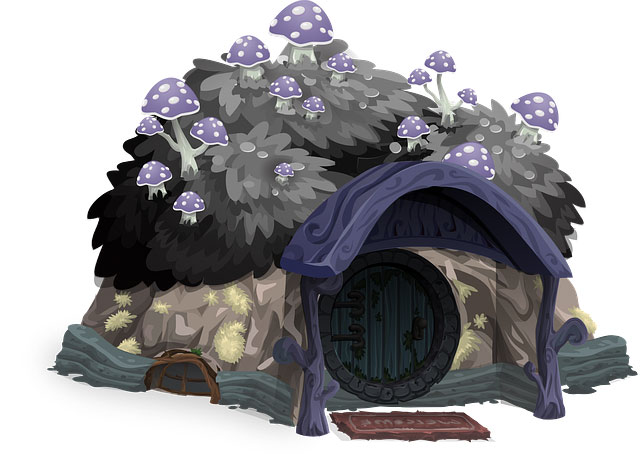When choosing to live off the grid, determining what type of house to build or live in can be daunting. There are several different options, and each comes with its own positives and negatives. There are small homes that are above ground, underground, half-and-half, mobile, and more. Choosing one will depend on a quantity of factors, including location, abilities, family size, and more.
Stationary Homes
Homes that do not move are an option that many prefer. Owning a bit of land with a home on it has long been considered an integral part of the American dream, and for many, it still is. Having a settled address and a place where one belongs offers a stability and satisfaction that is difficult to match.
On the Ground
This category includes basic house-style homes. Whether the house is on a wooden foundation, a slab, or set up and tied down like a mobile home, this type of home sits nicely where it is put, generally speaking.
A tiny house built on a concrete foundation is similar to a typical house, just smaller. It can be designed in a way that makes sense for the family that will inhabit it, and can be fitted with standard plumbing and electricity (if desired) or set up to use off-gridaccessories such as solar power, a well, and other such things.
Building on a wooden base with runners or skids can allow movement later, if desired, while still offering a firm and stable base.
A cinderbox dwelling is a small, prefabricatedhome made for minimalist living. It generally costs less while providing good quality construction with the potential to be easily transported, if necessary.
A granny podis another option. These may be purchased premade or made from scratch. They have become more popular in recent years for grandparents to live close to family without sharing the same house.
A small trailer or mobile home is another option. These are lower in cost than the larger versions and, while they do not retain value as much as a standard house, they will last for many years. They can also be moved, if desired.
An arched cabin is sturdy and can a kit be purchased for as little as $1,000, with the range being up to $5,000.
A garden shed can be converted into a tiny house, with a bit of adjustment (such as insulation and a sturdy base). These are usually affordable, as they are meant for storage rather than dwelling, but it is not too difficult or expensive to convert them.
Cabins can be made small, too. They can be built from aromatic wood and heated with a wood stove for a delightful rustic home.
More common in England, a cob house is made of a mixture of clay, sand, and straw. This inexpensive material is amazingly durable; in England there are cob buildings that have lasted over 500 years! The best ones begin with a stone foundation to keep the cob walls from touching the ground, preventing moisture from below, and overhanging thatch on the roof to protect the walls from moisture from above. These are one of a kind, because of the way they are created.
Some have turned shipping containers into homes. They are a bit larger than average tiny houses, but smaller ones can be obtained. The industrial look lends itself well to simplicity.
Underground
Those who have watched Lord of the Rings will know that the homes in the Shire were primarily underground. This is a possibility for actual homes. They can look like Hobbit-homes at the front or can look like a standard home out front while the rest of the home is under the grass and dirt. This works as natural insulation to keep the home an even temperature.
Above the Ground
Though less common, a tree house is an option for a tiny house. It is necessary for the occupant to be able to either climb a ladder or stairs, in most cases, which may be one reason they are less often seen.
Movable Homes
A tiny house on wheelsis pulled behind a vehicle like a trailer – which it is. The advantage to this option is that home is always there, even when travelling. There is no need for expensive hotels and uncomfortable strange beds; just rent a spot in a park and enjoy! While this can be a small house built on a trailer base, it can also be a converted van or bus.
Tumbleweed Tiny Houses is a company that builds tiny houses on wheels and also provides information for building one.
A small motorhome or RV is another option. Premade motorhomes are already built to code for RVs, removing one of the possible complications of living in a tiny house.
Gypsy wagons are a beautiful option. Usually painted in bright, cheerful colors, these wagons are meant to be a mobile place to live, as the nomadic namesakes who originally created them intended. It is possible to rent or purchase them, and there are plans available to allow people to build their own.
